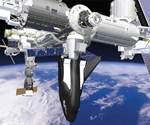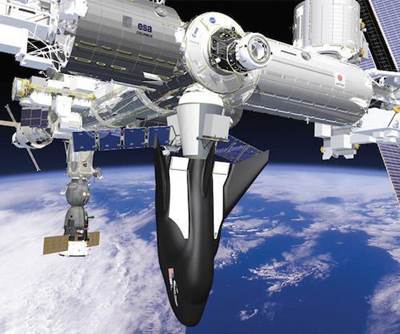The emerging commercial space industry: Habitats and CubeSats
This sidebar to the September 2016 feature story on the emerging commercial space industry focuses on Habitats and CubeSats.
Although information about their methods of construction are scarce and it is too soon, therefore, to tell if they will be big markets for composites, commercial research satellites and extraterrestrial workspaces represent great future potential. The following are three examples.
Bigelow Aerospace (Las Vegas, NV, US), has a Federal Acquisition Regulation (FAR) contract with NASA for an expandable activity module, called the Beam, which was successfully attached to the ISS and inflated on June 6, this year. US astronaut Jeff Williams then entered the Beam and added wireless sensors throughout the interior as a technology demonstrator to measure essential data, such as pressure, temperature, radiation and micrometeorite debris impacts. Astronauts will collect the findings on a regular basis for two years, as evidence of how well an expandable system will work in space. The Beam offers 16m3 of interior space, which is available “for rent” to government or commercial tenants.
Bigelow also has developed a larger inflatable space habitat (with 340m3 of internal space) for supporting microgravity research as well as future housing on the Moon for astronauts or space tourists — or a potential way station for missions to Mars.
The rise of CubeSats
By contrast, very small satellites, called CubeSats — not much larger than a loaf of bread — are very big business today. Founded in 2010 by a team of ex-NASA scientists, Planet Labs LLC (San Francisco, Calif.) is a leader here. “We are building a constellation of very small CubeSats, which we named Doves,” says company communications operative Rachel Holm. “Planet is driven by a mission to image the entire Earth every day, making global changes visible, accessible and actionable,” he explains. The company, in fact, has designed, built and now operates the world’s largest commercial fleet of Earth-imaging satellites, funded by venture capital and customers of its services.
As of mid-May, Planet had launched 133 satellites into space during a three-year period, on rockets built by SpaceX, Orbital ATK and the Japan Aerospace Exploration Agency (JAXA) to the ISS with other payloads. Planet’s CubeSats are then released from the ISS into orbit and operated from Planet’s Mission Control in San Francisco. Holm does not reveal if composite materials are used in making the satellites, but says, “Our Dove satellites are designed in-house using a mix of custom-designed, space-grade materials and off-the-shelf consumer-grade electronics.”
NanoRacks LLC (Webster, TX, US) was formed in 2009 to provide commercial hardware and services for the US National Laboratory, the official designation of the US portion of the ISS, through a Space Act Agreement with NASA. Abby Dickes, marketing and communications manager, says NanoRacks’ role with composites is limited, but calls NanoRacks the market leader for access to LEO. “We have coordinated more than 350 customer payloads that have launched to the ISS, which includes 120 CubeSats deployed from our NanoRacks CubeSat Deployer on Station,” she says, adding that the company has helped push the space marketplace to its new era.
Its fleet of on-orbit hardware includes NanoLabs, MixStix (mixture tubes) a MicroPlate reader and a microscope. NanoRacks core payload hardware is its 10 cm3 NanoLab standardized plug-and-play CubeSat research modules. Its customers build their experiments (to discover seed or plant behavior, for example, in a microgravity, or weightless environment) into the NanoLab CubeSat for launch with other payloads to the ISS. Customers include NASA and other US government agencies, the European Space Agency (ESA), the German Space Agency (DLR), Urthecast, Space Florida, Virgin Galactic, pharmaceutical drug companies, Planet Labs, schools and more.
In 2015, NanoRacks signed a teaming agreement with Blue Origin to offer integration services on its New Shepard spacecraft. Also in 2015, an agreement was signed with Made in Space (Moffett Field, CA, US), which has developed additive manufacturing technology for use in microgravity, to build and deploy 3D printed satellites into orbit. Called Stash & Deploy, the experiment has demonstrated that a 3D printer works normally in space. NASA says testing a printer on the ISS is the first step toward establishing an on-demand machine shop in space, which would be essential for deep-space crewed missions.
This short article is a Side Story to a feature article titled "The emerging commerical space industry." To read this article, click on its title under "Editor's Picks" at top right.
Related Content
Plant tour: Airbus, Illescas, Spain
Airbus’ Illescas facility, featuring highly automated composites processes for the A350 lower wing cover and one-piece Section 19 fuselage barrels, works toward production ramp-ups and next-generation aircraft.
Read MoreCutting 100 pounds, certification time for the X-59 nose cone
Swift Engineering used HyperX software to remove 100 pounds from 38-foot graphite/epoxy cored nose cone for X-59 supersonic aircraft.
Read MoreRevisiting the OceanGate Titan disaster
A year has passed since the tragic loss of the Titan submersible that claimed the lives of five people. What lessons have been learned from the disaster?
Read MoreWelding is not bonding
Discussion of the issues in our understanding of thermoplastic composite welded structures and certification of the latest materials and welding technologies for future airframes.
Read MoreRead Next
The emerging commercial space industry
A decade since NASA opened extraterrestrial space to potential use as a commercial industry workplace, CW traces the role composites have played in public/private progress toward that goal.
Read MoreCeramic matrix composites: Faster, cheaper, higher temperature
New players proliferate, increasing CMC materials and manufacturing capacity, novel processes and automation to meet demand for higher part volumes and performance.
Read MoreScaling up, optimizing the flax fiber composite camper
Greenlander’s Sherpa RV cab, which is largely constructed from flax fiber/bio-epoxy sandwich panels, nears commercial production readiness and next-generation scale-up.
Read More











